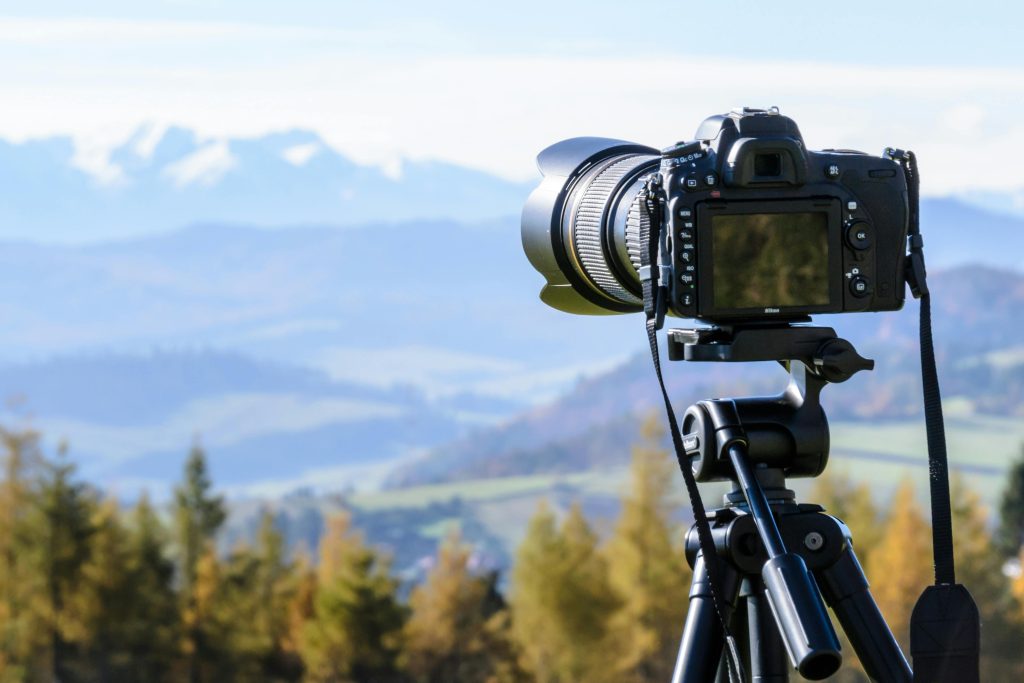The Jack-of-All-Trades Trap
When you’re starting out in photography, it’s tempting to try everything. Portraits, weddings, landscapes, products—the world seems full of opportunities, and you don’t want to miss a single one. But this jack-of-all-trades approach often leads to burnout and results that are, well, average. You spread yourself too thin, and instead of excelling in one area, you end up feeling like you’re just treading water.
The truth is, opinions on this topic vary widely. Some say specialization is the key to success, while others argue that diversifying your skills opens more doors. To be honest, it’s hard to decide which one is right. Every photographer’s journey is different, and what works for one person might not work for another. That’s why it’s important to understand the context: are you pursuing photography as a hobby or as a freelance business?
For hobbyists, the answer is simple: do what you want, when you want. Photography should be about freedom, creativity, and exploring whatever catches your eye. But for freelancers, the equation changes. In a competitive market, finding a niche isn’t just about narrowing your focus; it’s about standing out. Clients need to know exactly what you offer and why you’re the best choice for their specific needs.
That said, the early stages of freelancing often leave little room for picking and choosing jobs. When you’re just starting out, it’s natural to say yes to everything that comes your way. And you should—as long as you’re honest about your skills and only take on jobs you can deliver well. Over time, this varied experience will help you discover what you truly enjoy and where your strengths lie.
So, what if focusing on one thing could elevate your photography and make you stand out? What if finding your niche could transform your business into something uniquely yours? In the chapters ahead, we’ll explore why niches matter, how to find yours, and how to overcome the fears that might be holding you back.
Why Niche Photography Matters
In today’s competitive market, having a niche isn’t just a nice-to-have; it’s often a must. When you specialize in a specific type of photography, you set yourself apart from the sea of generalists. Clients looking for a particular service are more likely to trust someone who focuses exclusively on what they need. For instance, a couple planning their wedding will likely choose a dedicated wedding photographer over someone who dabbles in everything from landscapes to corporate headshots.
Specialization also helps you build expertise. When you consistently work within a particular niche, you learn its ins and outs, from mastering the technical aspects to understanding what clients in that space value most. Over time, this expertise becomes your calling card, making it easier to attract clients and command higher rates.
But the benefits of finding a niche go beyond just skill-building. A clear niche makes marketing simpler and more effective. Instead of trying to appeal to everyone, you can focus your messaging on a specific audience. This targeted approach not only saves time and resources but also resonates more deeply with potential clients who feel you truly understand their needs.
Finally, having a niche can bring a sense of fulfillment. When you’re passionate about your specialty, your work feels less like a grind and more like a creative journey. You’re not just taking photos; you’re creating something that aligns with your interests and values, which can lead to a more satisfying and sustainable career.
How to Discover Your Niche
Finding your niche isn’t an overnight process—it’s a journey of self-discovery and experimentation. If you’re unsure where to start, here are a few actionable steps to guide you:
Assess Your Passions: What types of photography excite you the most? Is it the candid moments of a wedding, the serene beauty of landscapes, or the challenge of capturing a product’s essence? Passion is a strong indicator of where you’ll find long-term satisfaction.
Review Your Past Work: Look back at your portfolio and see which photos receive the most positive feedback. Are there patterns in the type of work you’ve done well? Sometimes your niche is hiding in plain sight, waiting for you to recognize it.
Explore Market Demand: Passion is important, but so is practicality. Research what types of photography are in demand in your area or online. Are there underserved markets you could tap into? For example, drone photography or pet portraits might be growing trends that align with your interests.
Experiment and Reflect: Don’t be afraid to try different types of photography early in your journey. Every project teaches you something new, helping you refine your preferences and skills. Reflect on what you enjoyed and what felt like a chore.
Talk to Your Clients: If you’ve already worked with a few clients, ask them what they appreciated most about your work. Their perspective might help you identify strengths you didn’t realize you had.
Remember, your niche doesn’t have to be set in stone. It can evolve as you grow as a photographer and discover new interests. The key is to start somewhere and let the process guide you.
The Freelance Reality: Say Yes (Within Reason)
Freelancing, especially in the early stages, can feel like a juggling act. Bills need to be paid, your name needs to get out there, and every opportunity feels like a step forward. It’s completely natural to say “yes” to almost everything at this stage—and often, you should. Every job, no matter how small or outside your comfort zone, brings valuable experience, builds your portfolio, and introduces you to potential new clients.
However, there’s a catch. While saying “yes” can be the right strategy, it’s important to recognize your limits. Taking on a project you don’t feel equipped to handle can lead to unnecessary stress, disappointment for your client, and damage to your reputation. It’s a delicate balance: being open to new opportunities without overextending yourself.
One way to navigate this is by being honest about your current skill level. If a client approaches you with a job that’s outside your comfort zone, consider whether you can learn the necessary skills quickly enough to deliver quality work. If not, it’s better to politely decline or recommend someone else. Integrity goes a long way in building trust and long-term relationships.
The variety of work you take on in the early days can also help you discover your niche. Each job will teach you something new—not just about photography, but about what you enjoy and excel at. Over time, you may notice patterns emerging: certain types of projects feel more rewarding, clients praise you for specific strengths, or you develop a unique style. These are all clues pointing toward your ideal niche.
In short, saying “yes” to work is essential when you’re starting out, but remember to set boundaries. Prioritize quality over quantity, and let your experiences guide you toward the specialization that aligns with your skills and passions.
Examples of Successful Niches
Specialization doesn’t mean limiting yourself; it means carving out a space where your expertise shines. Let’s explore some real-world examples of photographers who’ve found their niches and turned them into thriving careers:
Pet Photography: Capturing the personality of pets in creative ways has become a booming niche. From heartfelt portraits to playful action shots, pet photographers connect with a passionate client base of animal lovers.
Drone Photography: Aerial shots offer a perspective few photographers can achieve. Real estate agencies, tourism boards, and environmental projects increasingly seek specialists in this field.
Fine Art Portraits: Some photographers have mastered the art of creating painterly, stylized portraits, blending photography with digital artistry. Their unique style attracts clients looking for something beyond traditional photography.
Food and Restaurant Photography: In the age of Instagram, food photographers have found steady demand from restaurants, cafes, and brands eager to showcase their dishes and products.
Documentary Photography: Storytelling through images remains a powerful niche, whether it’s for non-profits, publications, or personal projects. These photographers often focus on specific themes, such as social issues or environmental conservation.
Each of these niches highlights the power of focusing on a specific audience or style. When you excel in your niche, clients seek you out—not because you do a bit of everything, but because you’re the best at what you do.
Overcoming Fears of Narrowing Your Focus
Choosing to specialize in a niche can feel daunting, especially when the fear of missing out looms large. What if you lose potential clients? What if your chosen niche doesn’t work out? These concerns are valid, but they shouldn’t hold you back from exploring the potential benefits of specialization.
“What if I lose potential clients?” It’s true that narrowing your focus means turning away certain opportunities, but it also means you’ll attract the right clients. People seeking a specialist are often willing to pay more and trust your expertise, knowing you’ve dedicated yourself to mastering a specific field.
“What if I get bored with one style?” A niche doesn’t have to be rigid. Think of it as a foundation rather than a cage. You can always evolve, expand, or refine your focus as your skills and interests grow. Many photographers find that mastering one niche opens doors to related opportunities.
“What if I choose the wrong niche?” There’s no such thing as a final decision when it comes to finding your niche. Trial and error are part of the journey. What’s important is starting somewhere and learning from the process. Over time, you’ll gain clarity about what works best for you and your business.
Specialization doesn’t mean excluding growth; it’s about creating a strong identity that sets you apart. Once you establish yourself in a niche, you’ll find that it becomes easier to explore new opportunities, not harder. By focusing on what you love and where your skills shine, you’ll build a reputation that attracts clients who value your unique expertise.
How to Build Authority in Your Niche
Establishing authority in your niche is key to attracting clients and standing out in a crowded market. Here are some practical steps to position yourself as an expert:
Create a Cohesive Portfolio: Showcase your best work that aligns with your niche. A focused portfolio tells potential clients exactly what to expect and builds trust in your abilities.
Network with Like-Minded Professionals: Attend industry events, workshops, or online communities related to your niche. Collaborating with others in your field can open doors to new opportunities and referrals.
Share Your Knowledge: Write blog posts, create tutorials, or host webinars that demonstrate your expertise. Sharing valuable insights not only helps others but also positions you as a go-to resource in your niche.
Maintain Consistency on Social Media: Use platforms like Instagram, Pinterest, or LinkedIn to showcase your niche-specific work. Regular posting and engaging with your audience can strengthen your brand.
Get Published or Featured: Submit your work to magazines, blogs, or competitions relevant to your niche. Being featured in reputable outlets can boost your credibility and visibility.
Ask for Reviews and Testimonials: Encourage satisfied clients to leave positive reviews or testimonials. These serve as social proof and reassure potential clients of your skills and professionalism.
Building authority takes time and effort, but the rewards are worth it. As your reputation grows, you’ll find it easier to attract high-quality clients who value your expertise.
Your Path to Success
Finding your niche in photography is a journey, not a destination. It’s about discovering what you’re passionate about, honing your skills, and connecting with the right clients. While the process may seem daunting at first, the benefits of specialization far outweigh the challenges.
Remember, your niche doesn’t have to be rigid. Allow yourself the freedom to evolve and explore as you grow. By focusing on what you love and where your strengths lie, you’ll build a sustainable and fulfilling career that stands the test of time.
So take that first step. Reflect on your passions, experiment with your craft, and start carving out your unique place in the photography world. Success is waiting—one focused shot at a time.



